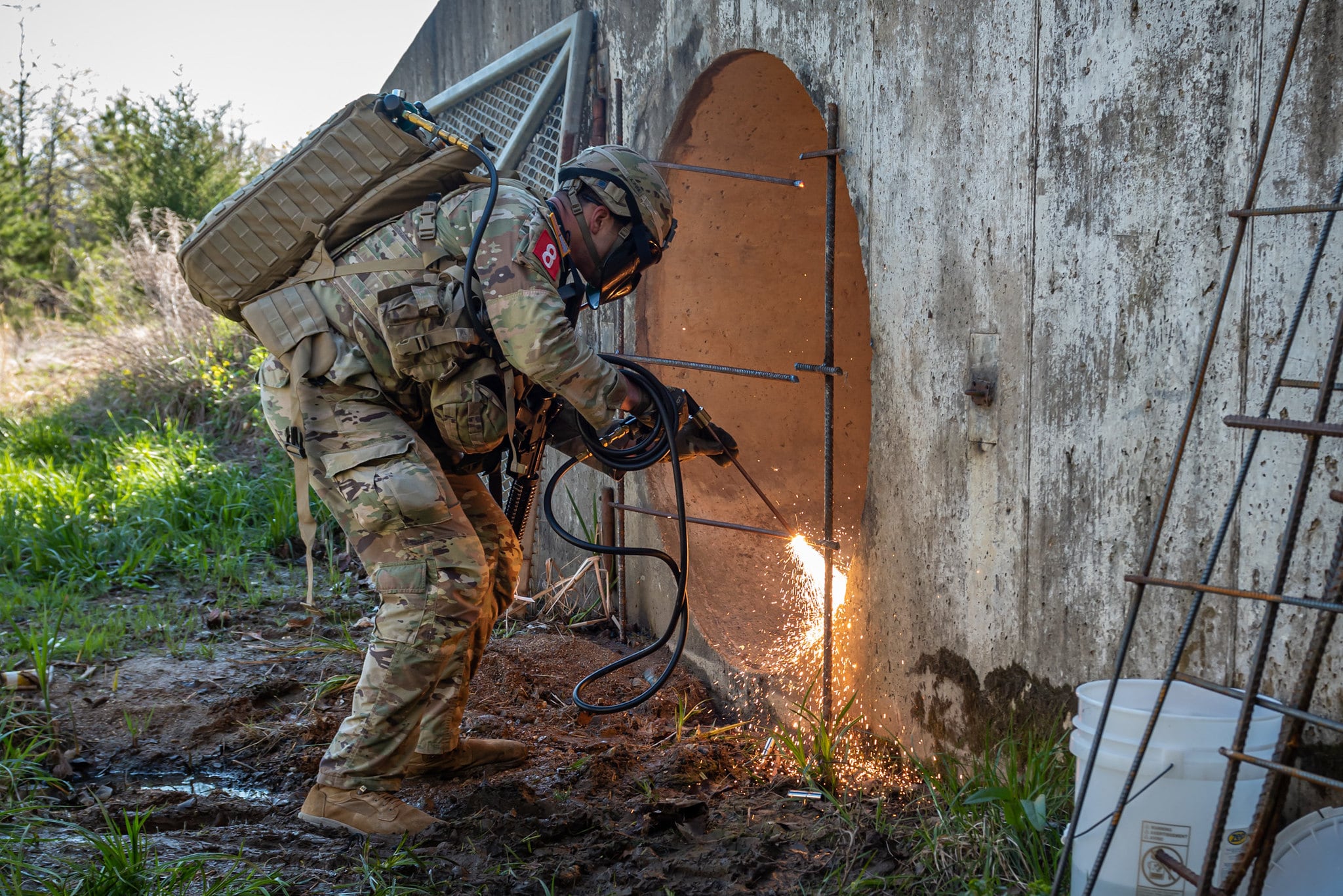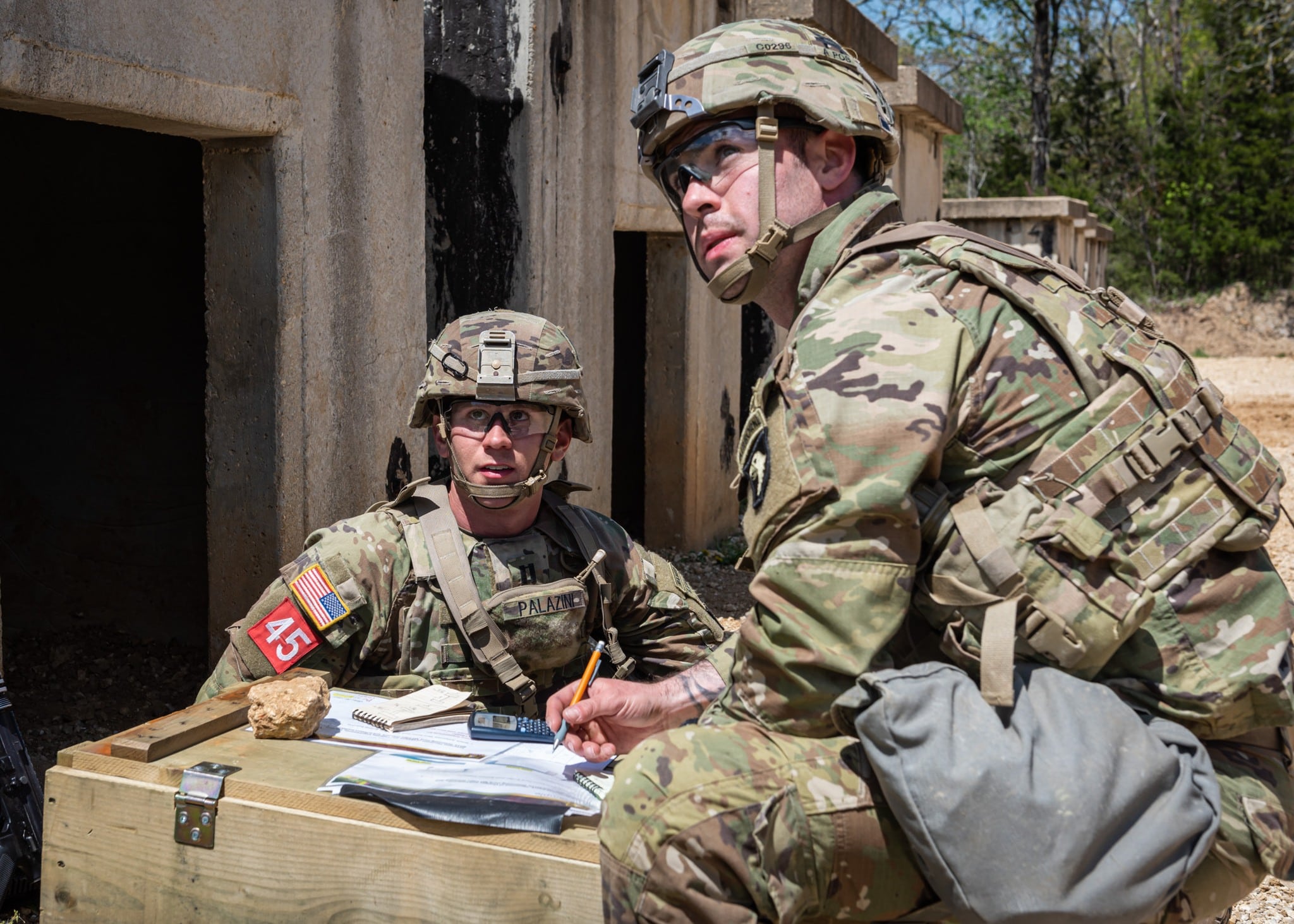For the winners of this year’s Best Sapper Competition, the toughest part of the annual event between Army combat engineers had little to do with blowing doors off their hinges, identifying ordnance, breaching, or any of the other tasks one thinks of when they hear the words “combat engineer.” Instead, it had to do with watches, or lack thereof.
“[The] toughest part is the mental aspect of it,” said Capt. Joseph Palazini, a company commander with the 21st Brigade Engineer Battalion, 3rd BCT, 101st Airborne Division out of Fort Campbell, Kentucky.
Palazini, along with his teammate, Capt. Matthew Cushing, who serves as the assistant operations officer with the same unit, took first place in the 16th Annual Lt. Gen. Robert B. Flowers Best Sapper Competition that ran from April 21 to 24 at Fort Leonard Wood, Missouri.
A total of 100 sapper-qualified soldiers from across active duty, the Army Reserve and the National Guard took part in the competition, working in two-person teams. The competition spanned 58 hours and a range of nearly 60 miles, during which time soldiers tested their mettle in marksmanship, demolitions, first aid, urban breaching, and a host of physical fitness challenges.
Two of those events — an X-mile ruck march and X-mile run, so named for the fact that the distance was unknown to participants — proved particularly difficult, according to the winners and one of the architects of this year’s competition.
“It may seem kind of trivial, but my little diabolical addition to the competition was taking their watches from them at the X-mile ruck march,” said 1st Sgt. Christopher Hoffman, who helped set up this year’s events. “A lot of people, how they time themselves and track all that, a lot of them have paces and stuff like that and most people try to shoot for 15 minutes per mile. So when I was like ‘hey, if we take their watches and they don’t know how far they’re going, they don’t know how long they’ve been out there, then they can’t do that.’ And it was just that additional little challenge and kind of a mind game to set them back a little bit.”
To make matters worse, the soldiers’ performance on the ruck 18-mile march impacted how much rest they’d get between completing that event and starting on the next. For one unfortunate team, by the time they completed the march they had just 15 minutes to drop their 50 pounds of gear before starting the next challenge.
The mind games — part and parcel of military life — weren’t the only curveballs thrown at the soldiers.

For Cushing, the competition offered a chance to put academic knowledge to the test, which can be an invaluable opportunity for soldiers so that their first real attempt at trying a technique doesn’t take place during a real-world operation.
“We studied a lot, and some of the calculations you study you have to use out here, so the saddle pitch, which is a diamond shape steel-cutting charge made of C-4 explosives, we know the calculation and how to do it based off the diagrams, but we’ve never done it in real life,” Cushing said. “So, having to form it to the shape of the object we were putting it around, that was a little more challenging than we expected. So I guess in the future, it’s not just about going over the demolitions calculations, but in the real world ‘how do you actually mold it onto the object you have to destroy?”
James is the managing editor of Military Times and the editor of Army Times. Prior to Military Times, James worked as the deputy editor of Task & Purpose. He is a former Marine Corps combat correspondent and deployed twice to Afghanistan with 1st Battalion, 6th Marine Regiment — first to Marjah in 2010, and then to Kajaki and Sangin in 2011.





